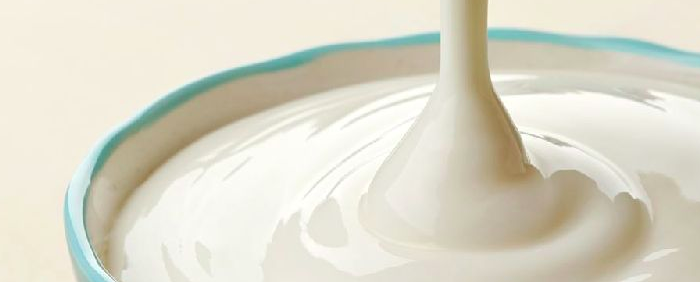
History of fresh cream
Until the end of the XIX th century, the cream was obtained simply by standing the milk in a cool place for 24 hours. The fat therefore concentrated on the surface and was recovered with a ladle.
Nutritional value of fresh cream
| For 30 ml (2 tbsp) | Fresh cream 40% fat |
| Calories | 100 kcal |
| Carbohydrates | 0 g |
| Protein | 0.6g |
| Fat | 12 g |
| Saturated fat | 7 g |
| Trans fat | 0.4 g |
| Cholesterol | 40 mg |
| Sodium | 10 mg |
| Vitamin A | 120 ER |
| Calcium | 44 mg |
Nutrients to consider
Saturated fat
Saturated fats in the diet have the effect of increasing LDL cholesterol (bad cholesterol) levels as much as HDL cholesterol (good cholesterol). The link between the consumption of saturated fat and cardiovascular risk, however, has not yet been fully elucidated and has been the subject of controversy in recent years. Indeed, these would not be as bad as it has been said for a long time because the current data do not support the recommendations on cardiovascular health which favor a low total intake of saturated fat.
In addition, it has been shown that certain fatty acids have a rather neutral effect on the lipid balance, including stearic acid which is present in products obtained from milk 1 .
Trans fat
Then the cream also contains trans fatty acids . Trans fatty acids are naturally present in small amounts in the cream. They are created in the stomach of ruminants when they consume polyunsaturated fatty acids of plant origin and transform them into trans fatty acids by bacteria in the stomach. We also know that trans fatty acids are also artificially produced in industry and added to many processed products such as margarines, pies, cakes, cookies and pastries.
It seems that the two types of trans fatty acids are not metabolized in the same way in the body. Indeed, a high consumption of natural trans fatty acids from dairy products whose butter and cream would have no harmful effects on the indicators of cardiovascular disease compared to industrial trans fatty acids 2 .
Use of fresh cream
The cream is mostly pasteurized because it contains more bacteria than milk. The crème fraîche is not homogenized because the fat globules are liquefied during pasteurization. The crème fraîche resists heat and cooking well.
The cream is cheerfully used in cooking to concoct sauces, dressings, soups, omelettes, vegetable gratins, etc.
Whipped , it becomes an ally of confectionery, pastries, soufflés, pies, Bavarians, cream puffs and other desserts of all kinds.
To cook casseroles and soups, add the cream at the very end to avoid lumps. When whipped, preferably use pre-cooled utensils.
The crème fraîche can be stored at a maximum of 6 ° C for 30 days from the date of manufacture and 2 days after opening. It is not recommended to freeze the crème fraîche because it becomes grainy.
A word from the nutritionist
|
The crème fraîche adds a pleasant flavor and texture to dishes. It is however very rich in fats so it should be used sparingly. |